The World Cup is no longer a driver for new tactical trends. It lags behind club
football in terms of innovation. Instead, the World Cup has become a solidifier of new tactical norms. The FIFA World Cup 2018 was the set piece tournament as 73 out of 169 goals were from sets. This mimics the club innovations of set-piece coaching specialists and the value of set pieces.
A clear new tactical norm is attacking direct free kicks having an attacking wall with the intention of blocking the goalkeeper’s view. In World Cup 2010 and 2014 most teams put attackers in the wall for the purpose of disrupting or collapsing the wall and positioning for a rebound. 2018 was all about obscuring the goalkeeper’s line of vision.
England Tactic
Kieran Trippier’s goal vs Croatia demonstrates the new intentionality, detail, and benefit of obscuring a goalkeeper’s line of vision. Next to the wall, you see Harry Maguire and Jesse Lingard looking back at the keeper allowing a path between for the keeper to see the ball.
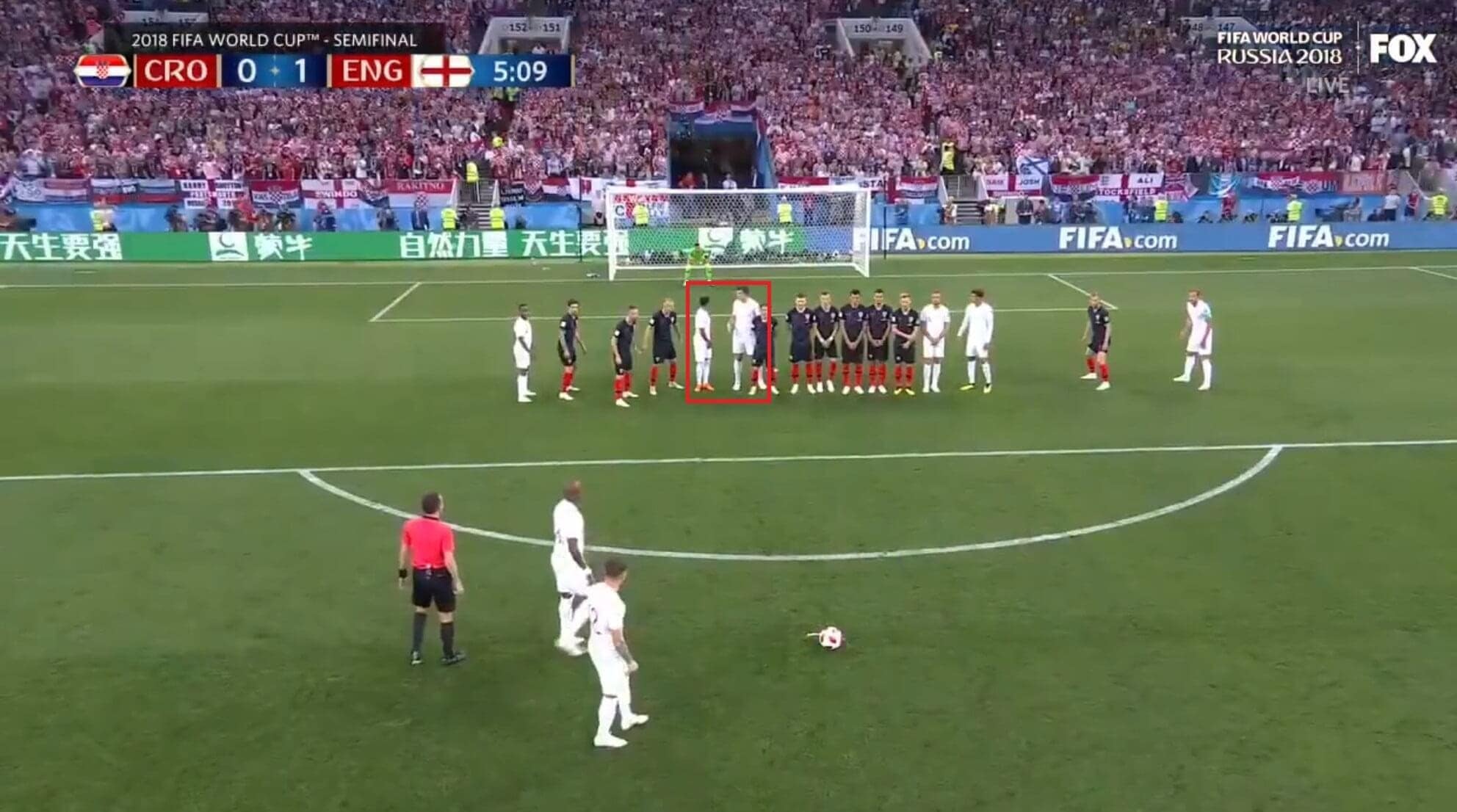
As Trippier goes to strike the ball Lingard and Maguire close the gap between them to block the vision of the keeper. The goalkeeper’s reaction is to stand straight up moving into a less athletic position.
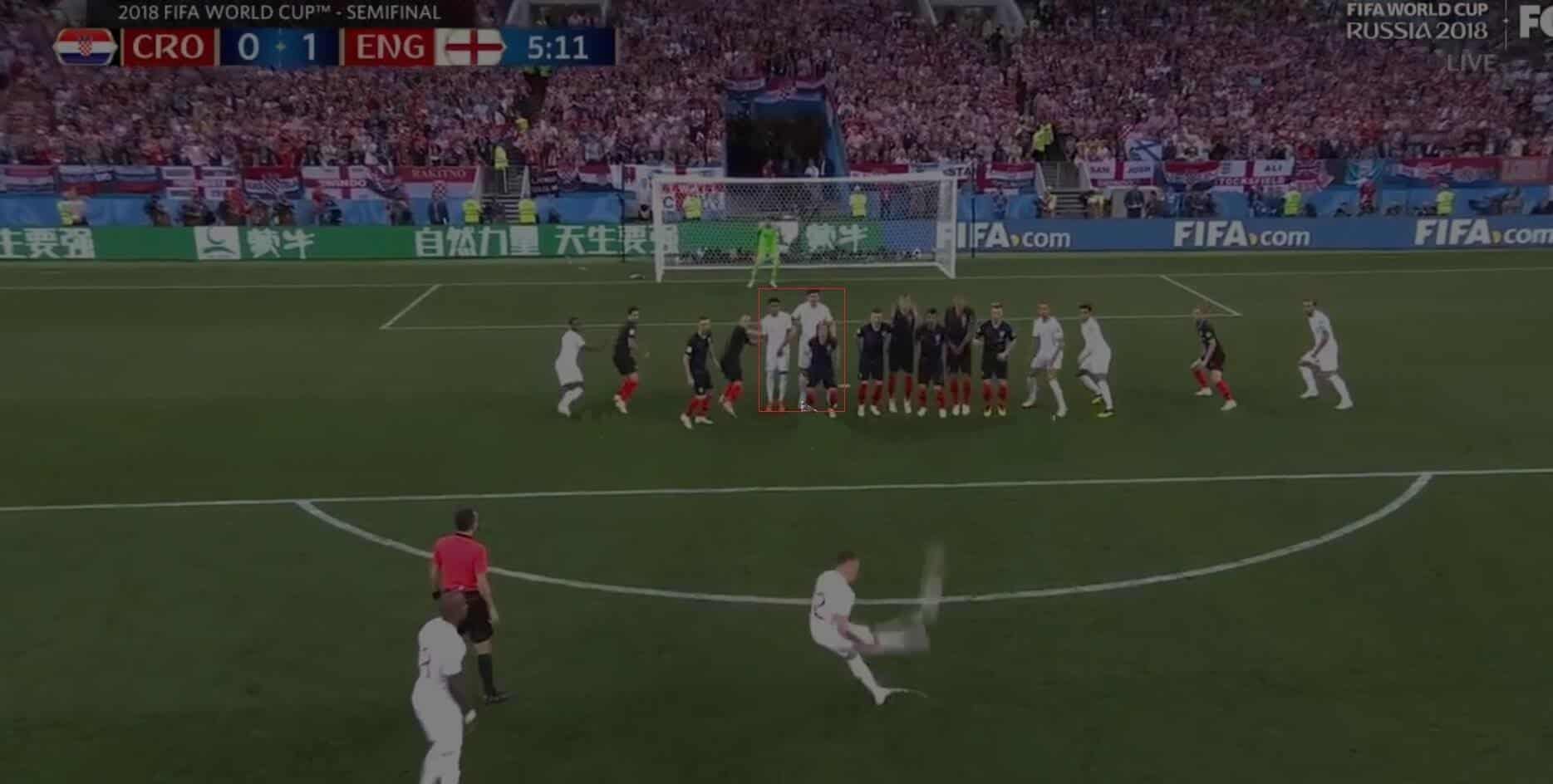
Trippier hits a great shot and is greatly aided by the attacking wall intentionally obscuring the goalkeeper. By the time the goalkeeper picks up the ball, it is past him. Any reduction in the goalkeeper’s reaction time increases the margin of error needed by the free kick taker.
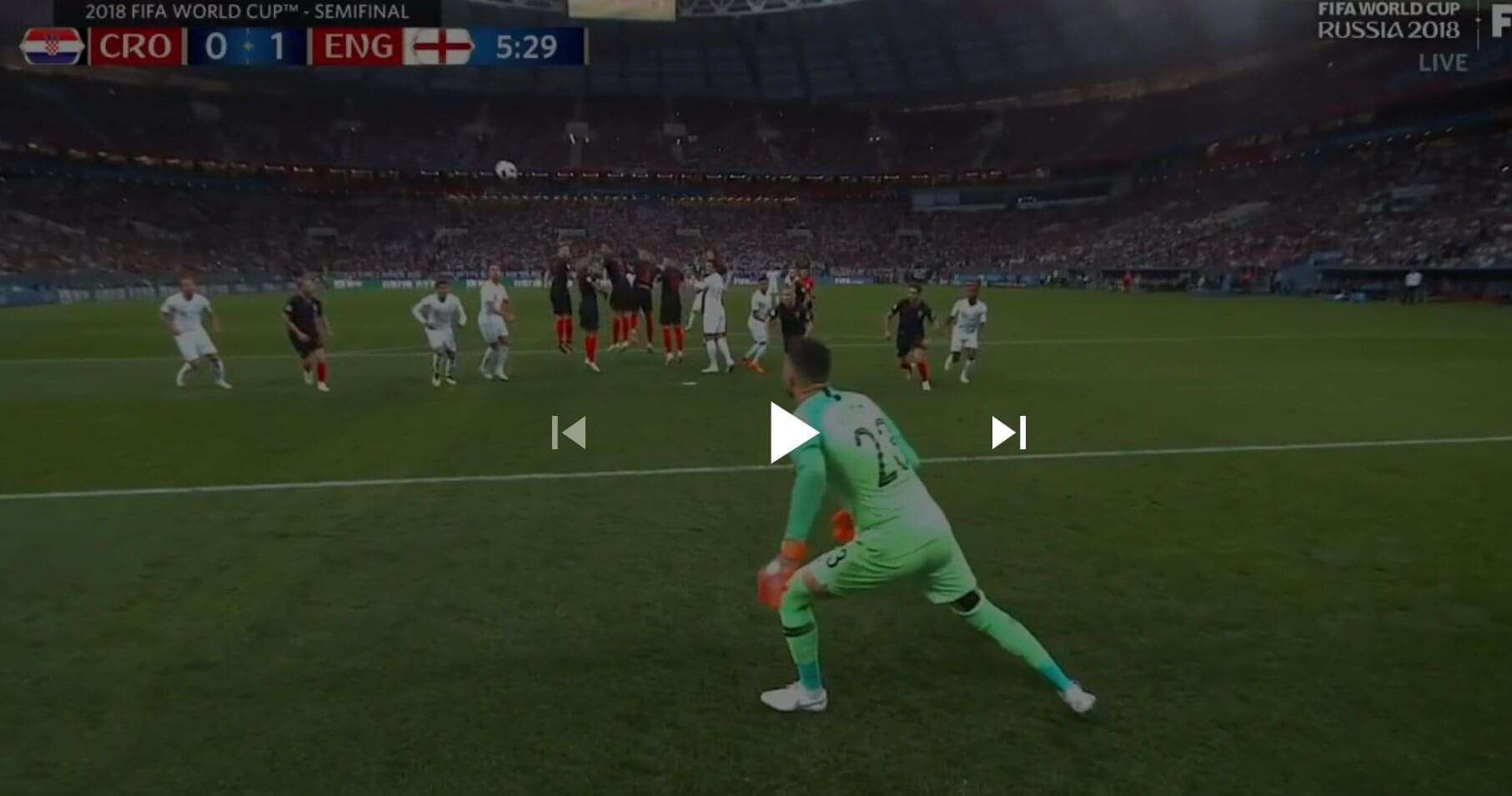
Uruguay Tactic
Uruguay uses a different strategy from England but with the same intention. England creates a vision tunnel for the keeper that they obscure late. Uruguay takes a different approach. They have an attacker in the wall who directly faces the keeper to ensure he is between the keeper and the ball.
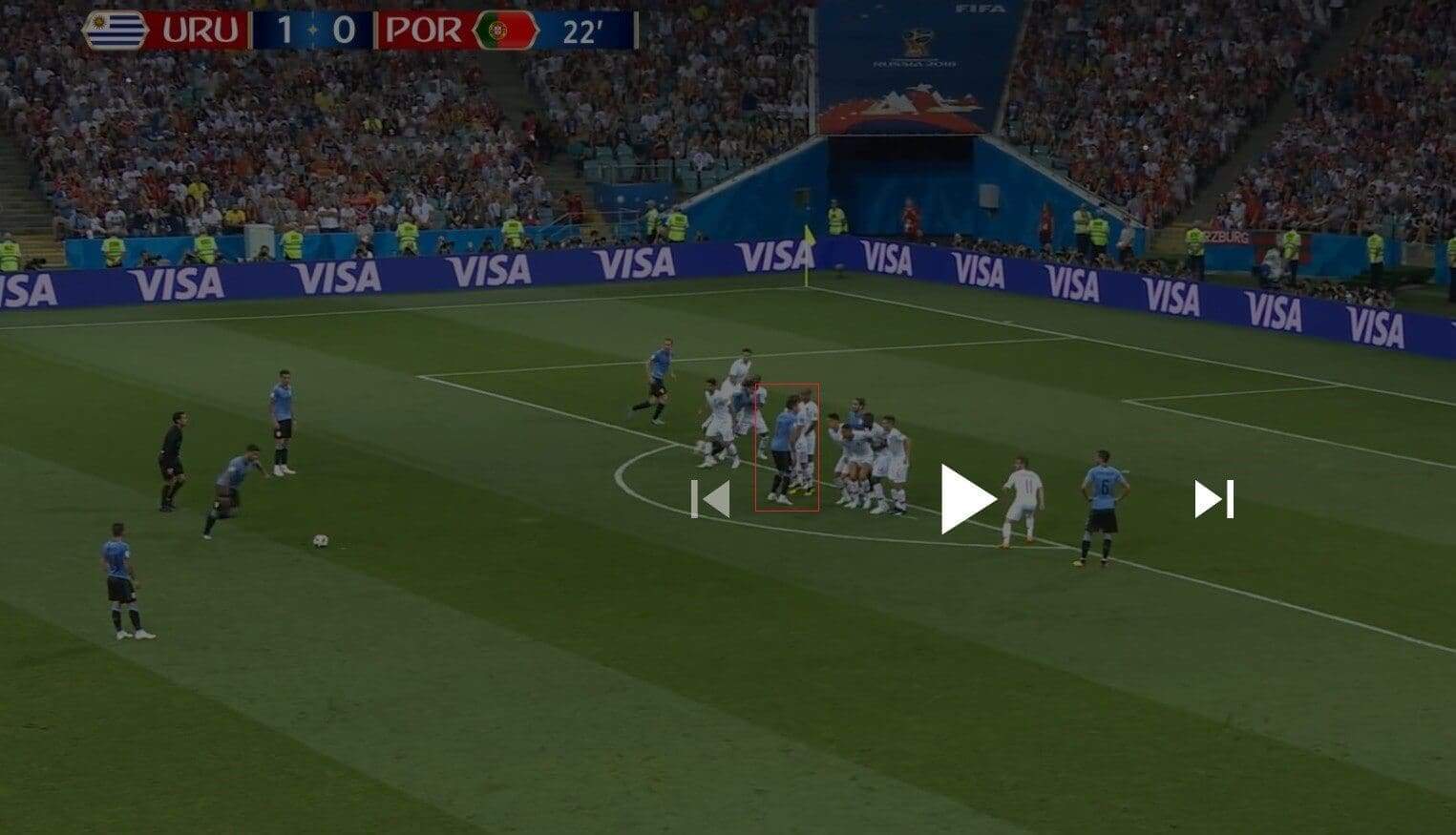
You can clearly see the Uruguay player back to the ball with his eyes locked on the keeper. His job is to position himself exactly in line with the ball and keeper. This is similar to a goalkeeper lining up a defensive wall with the ball and post. As a new tactic, you can see how uncomfortable the Uruguay player is having his back to the ball.
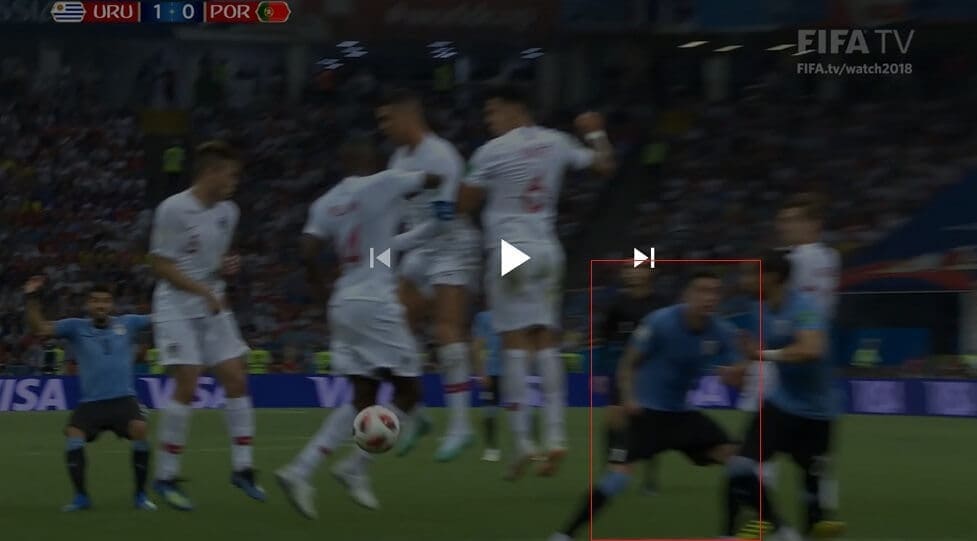
Sweden Tactic
Sweden shows a third method of blocking the goalkeeper’s line of vision. Their strategy is to create a three-person attacking wall in line with the ball and goalkeeper.
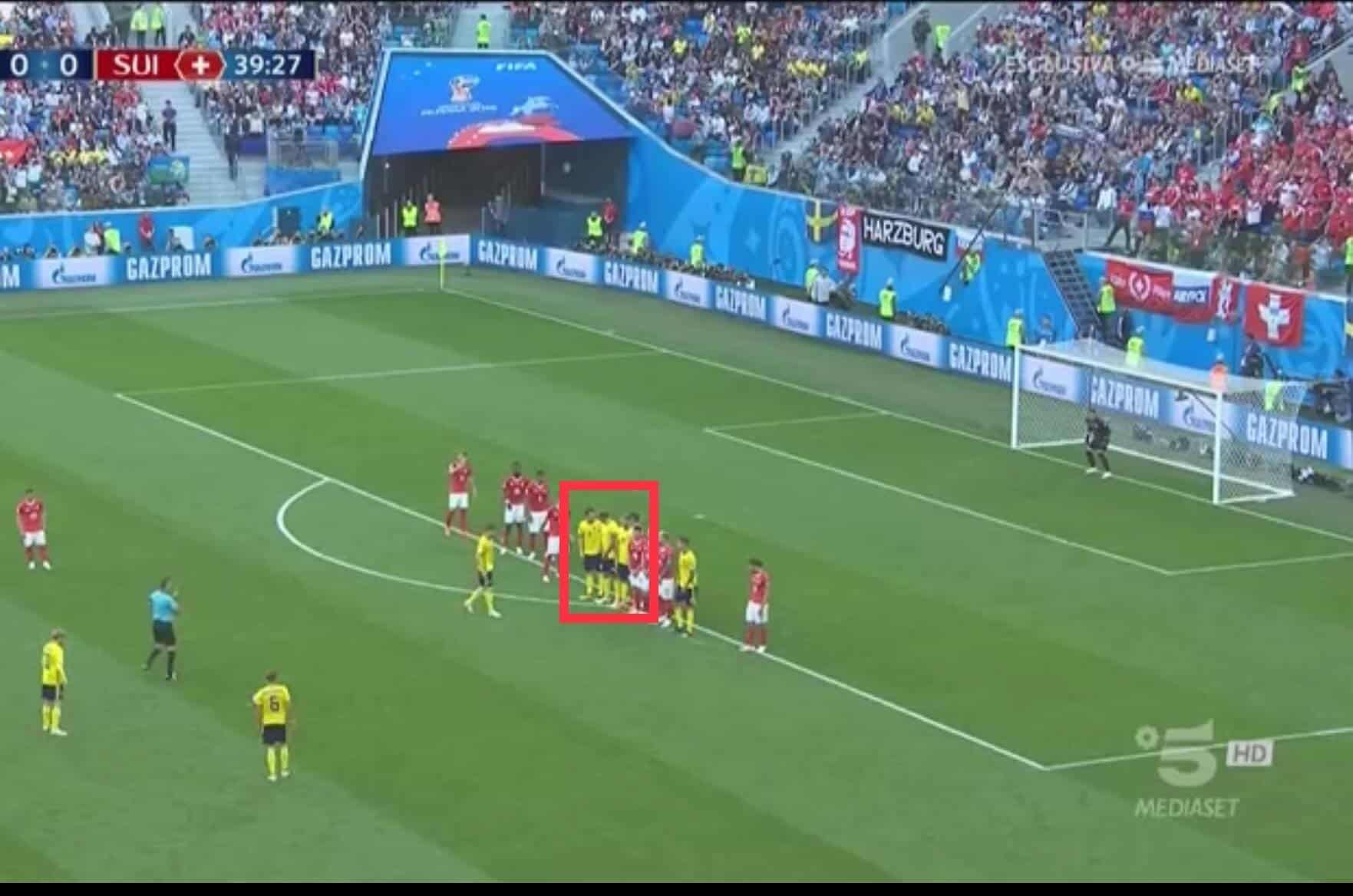
Sweden is banking on sheer size to obscure the free kick. Here we see the three biggest players in the attacking wall creating a massive obstruction for the goalkeeper’s view.
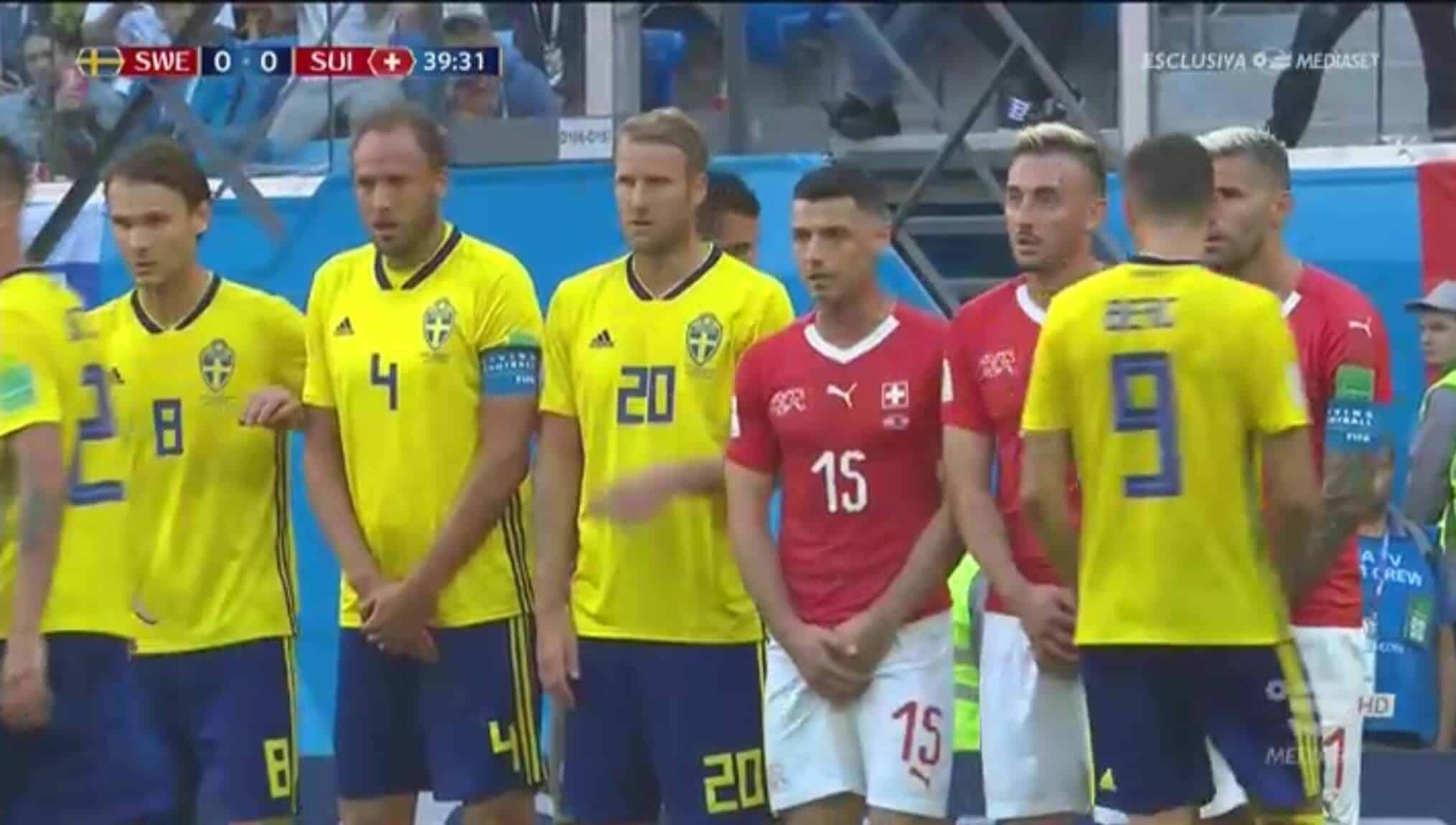
What’s Next?
Every game in every league this upcoming season will feature an intentional blocking of the goalkeeper’s line of vision on direct free kicks. That is the new tactical norm.
The next tactical iteration will be how to defensively adjust. Will innovative clubs change the keepers starting position? Adjust the position of the wall? Lessen the number of defenders in the wall? Split the wall to cover both posts with the keeper in the middle? Drop defenders onto the posts? The answer will undoubtedly come out of an innovative club.
One strategy that likely will not take hold is Russia’s not so subtle method for combating Uruguay’s attacking wall.
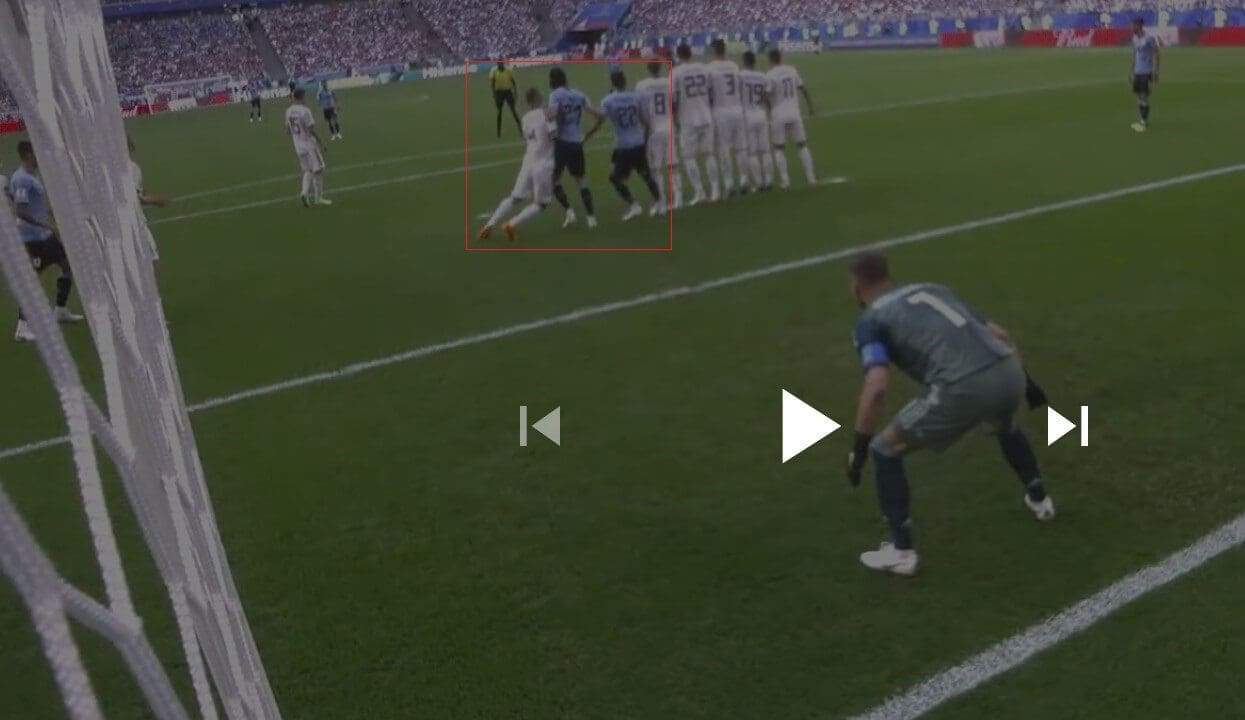
The two Uruguay attackers are completely removed from the play by one aggressive tackle by the Russia defender.
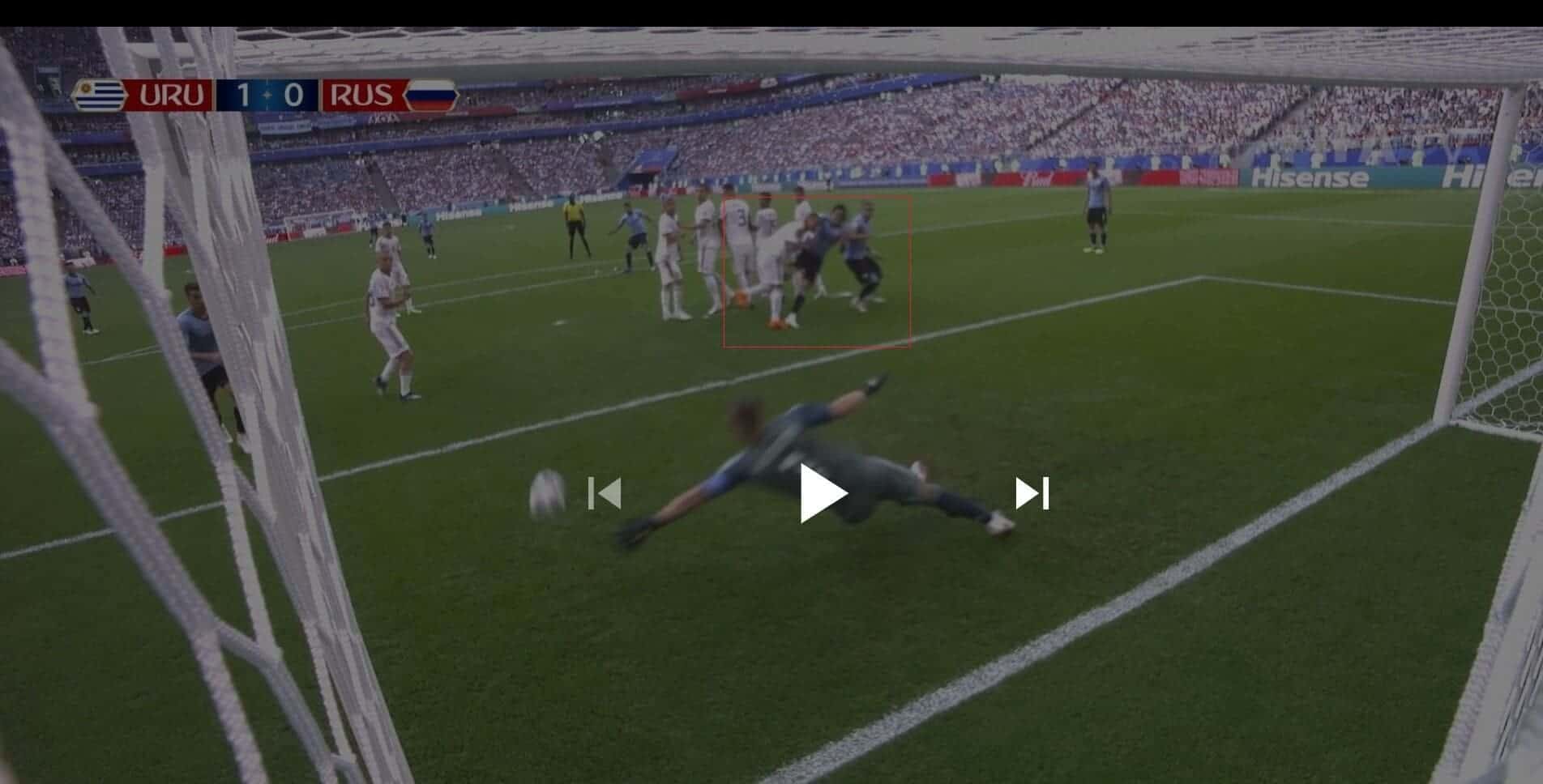
The upcoming season will provide numerous methods of obscuring the goalkeeper’a line of vision. We will see England, Uruguay, and Sweden tactics copied along with new innovative strategies. The attacking wall will be the new norm.
If your team does not attempt to take advantage of this competitive advantage one of two things are occurring. The manager either does not believe to have a free kick taker with class enough to get a shot over the wall or the manager is simply passing on maximising chance for success via an established set-piece edge.




Comments